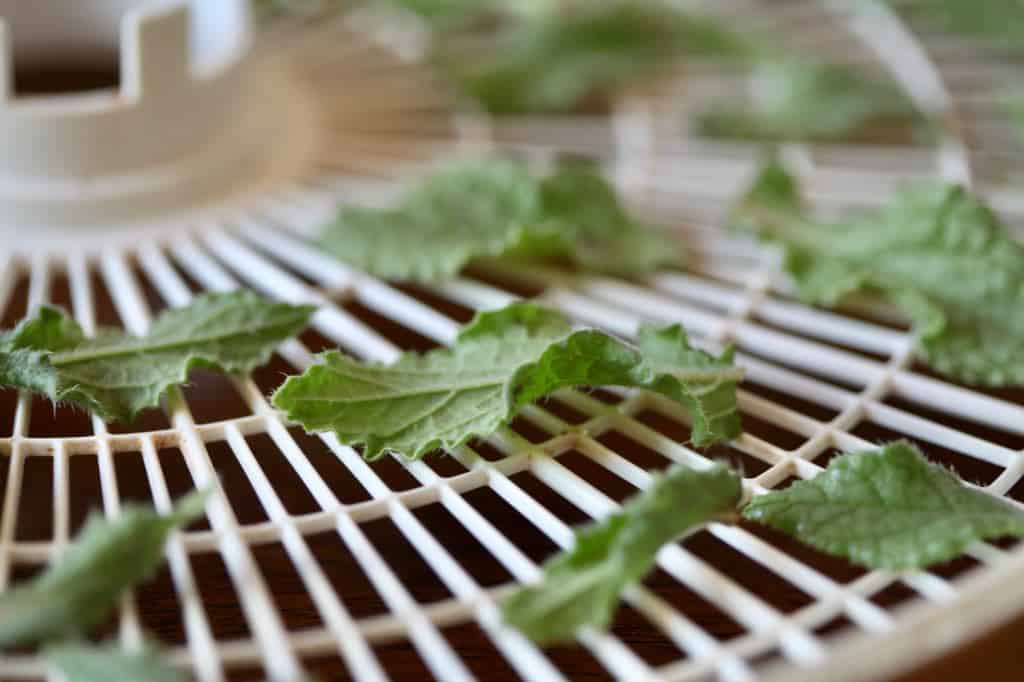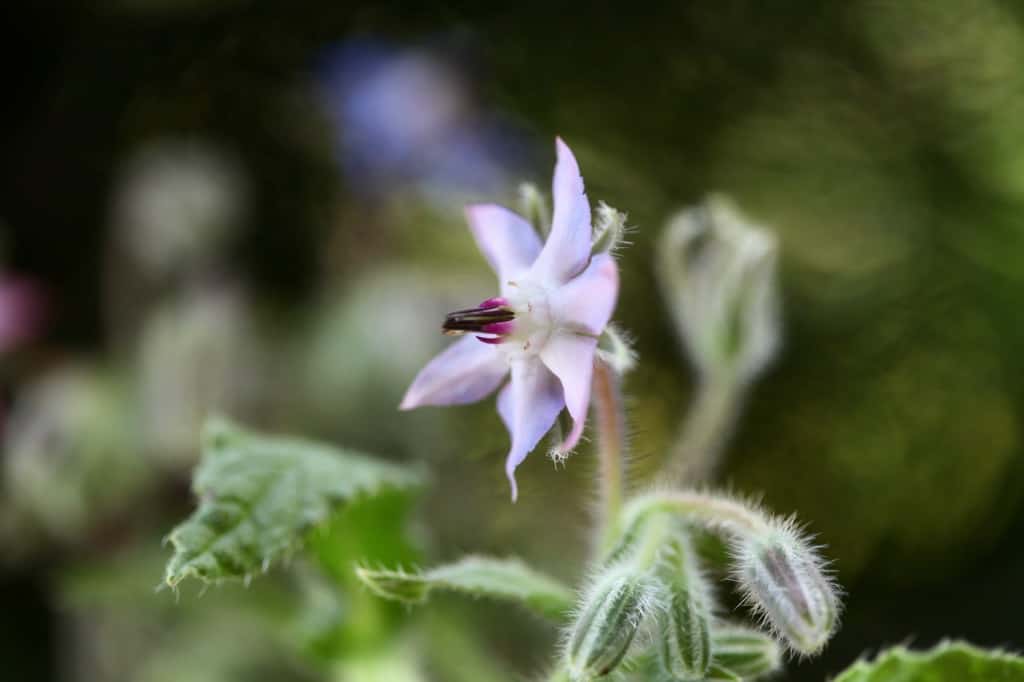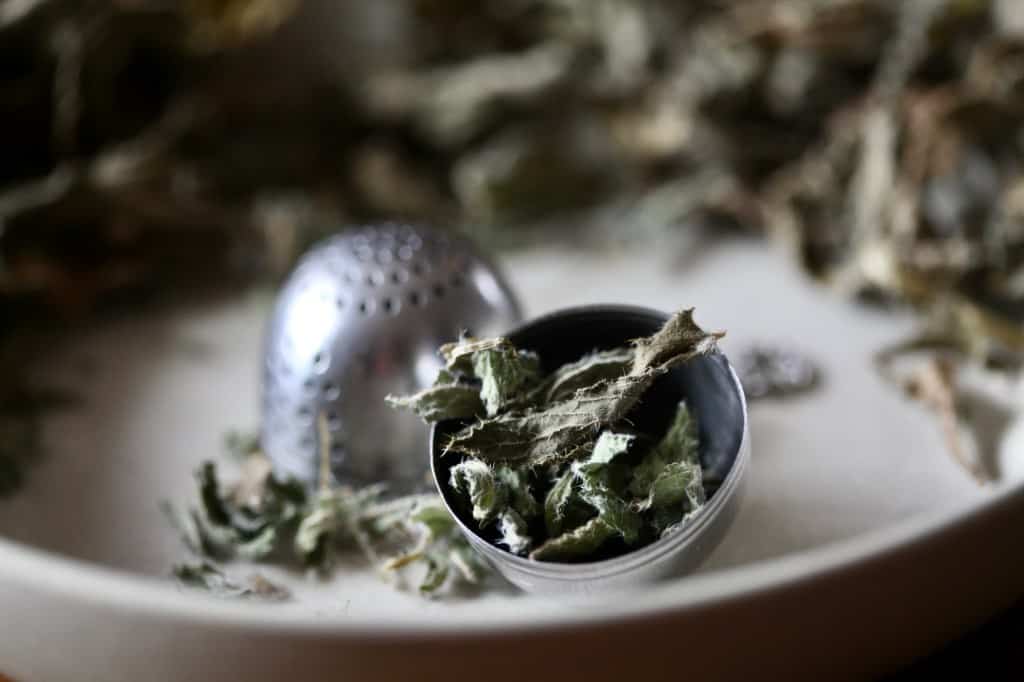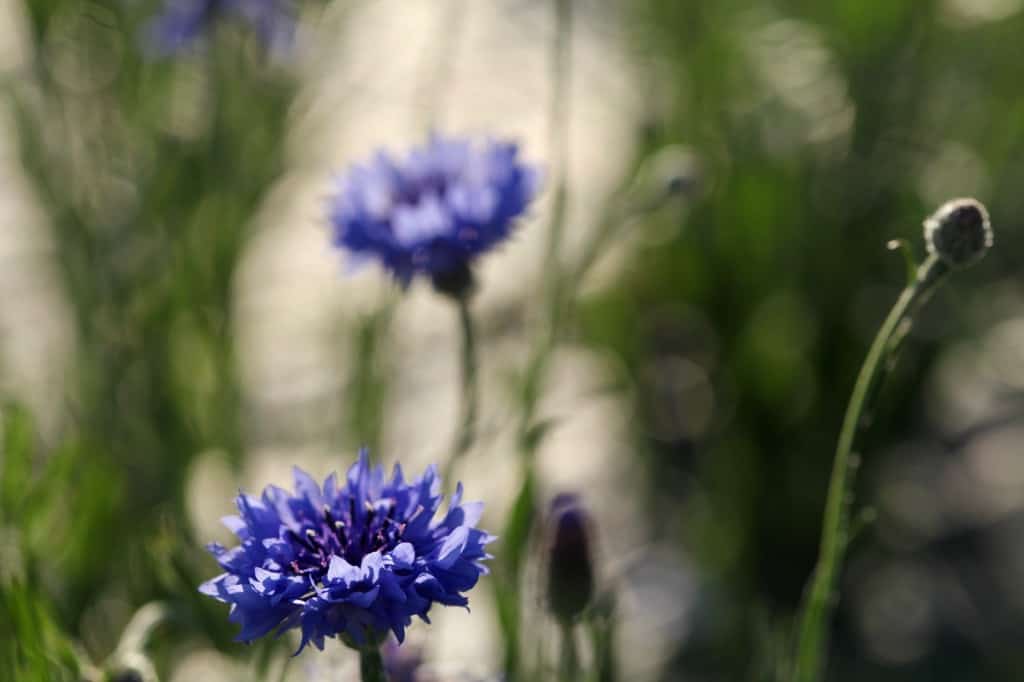Borage is a hardy annual herb, grown for it's beauty and medicinal benefits. The bright blue flowers are edible, and can be used as a striking garnish. The flowers and leaves can also be harvested for herbal tea. Learn how to make borage tea with this simple borage tea recipe.

How Do You Make Borage Tea?
Borage tea is made with the edible flowers or leaves of the borage plant. These plant parts can be used either fresh or dried, and steeped in boiling water to make a herbal tea. Read on to learn more about borage, and how to prepare the herb to make this borage tea recipe.
About Borage
Borage, or (Borago officinalis), is a favorite of many herbalists, and a popular medicinal herb for the garden.
Native to the Mediterranean, this herb has been cultivated for a very long time, for medicinal and culinary uses.
Borage is also known as star flower, as the fresh flower is shaped just like a star.
The organic edible flowers and fresh borage leaves are fabulous for culinary use.
Borage can be grown from seed fairly easily, and is likely to become a favourite in the garden, once it settles in. It readily reseeds on it's own, making volunteer plants from season to season.
The volunteer plants are easy to pull out however, if they are growing in unwanted areas.
The sweet blue nodding flowers draw many pollinators to the garden, especially the bees. These plants are beneficial to have in the garden, especially for the pollinators.
Borage will also repel unwanted garden pests, and is a great companion plant in the vegetable garden, which is a bonus.
If you want to make a borage tea, you have a few options on plant parts for harvesting.
The most common parts of the borage plant used for tea are the flowers and the leaves, both in fresh and dried forms.
The flowers and leaves are easy to harvest and dry, and store for later use.

What Is Borage Tea?
Borage tea is a herbal tea made from either the fresh or dried flowers or leaves of the borage plant.
The tea has a subtle cucumber flavor, and is pleasing to the palate. The flowers have a milder flavor than the leaves, so a tea made by steeping fresh flowers will have a milder flavor overall.
Borage leaves have fine prickly hairs which are more prominent on the older leaves.
Sometimes the prickly leaves can cause skin irritation, so use caution when handling. Wearing gloves during harvest can help prevent this irritation.
Select young leaves, which are more tender, for harvest if possible.

How To Dry Borage Leaves For Tea
Borage leaves can be easily dried and stored for later use. Dry herbs are preserved for use in the off season.
- Harvest the leaves from the borage plant.
- Wash the leaves in cold water to remove any garden dirt or bugs, and drain the water off in a colander.
- The leaves can be air dried by placing them on a cookie sheet and setting the sheet in a warm and dry location for several weeks.
- They can also be quickly dried with a dehydrator.

Dry Borage In A Dehydrator
- Place the leaves on the racks of the dehydrator, spacing them apart. They will shrink as they dry.
- Dry the leaves on the 135°F fruit/ veggie setting on the dehydrator, for approximately one hour, or until the leaves are completely dry and brittle to the touch.
- Leaves should be a dark green color when dried.


Store Dried Borage Leaves
- Store the dried leaves in an airtight container, in a cool and dark place for up to a year.
- Make sure to label the date of storage on the container.
Borage Tea Benefits
Borage is a common herb used in herbal medicine. This popular herb is said to have many beneficial properties and health benefits.

Borage has been identified as having a number of different vitamins, minerals, fibre, and omega 3 fatty acids. The vitamins and minerals include vitamin A, C, and B2, as well as iron, magnesium, and manganese.
The health benefits of borage are identified in this article on Check Your Food.
This study published in the National Library Of Medicine, Cancer Prevention and Health Benefices of Traditionally Consumed Borago officinalis Plants, reviews the value of borage and it's consumption in both fresh and dried states.
Some reported beneficial effects of borage include:
- Inflammation reduction
- Stress reduction
- Immune benefits
- Hormone balance
Borage seeds are a source of gamma linoleic acid, however the seeds are not used to make borage tea. They are used to make borage seed oil, which also is reported to have a number of medicinal properties.
Even beneficial herbs however, can have potential side effects, so it is important to consider safety before consumption.
As with other edible flowers and herbs, it's always best to start out slowly, until you are aware of the effects that the herb may have on your body.
Over consumption can cause side effects.
With any herbal teas, it is important to be aware of any safety precautions. There is a potential risk with overconsumption of borage herbal tea, so be aware of this risk, which we will discuss next.

Borage Tea Precautions
A word of caution for ingesting borage tea on a regular basis:
Borage also contains pyrrolizidine alkaloids, which can be toxic to the liver and lungs, especially with long term use or overconsumption.
A number of other herbal teas also contain these compounds, so use herbal teas with some caution.
Certain medical conditions or treatments may preclude the use of borage tea. Always check with your healthcare provider to be on the safe side.
- Borage tea should not be consumed by pregnant or lactating women, or children under twelve.
- Anyone with liver issues should not consume borage tea.
- Certain medications metabolized in the liver may not be as effective when taking herbal teas.
- Avoid consumption of borage tea if you are unsure about it's use, until medically cleared by your doctor.
Here is study published in Science Direct, titled Risk assessment of intake of pyrrolizidine alkaloids from herbal teas and medicines following realistic exposure scenarios. The study reviews long term risk of herbal tea usage, including five teas containing pyrrolizidine alkaloids.
One of the teas studied was borage tea.
The study highlights that short term intermittent use eliminates concern. Long term and regular consumption increases risk.
It also concluded that ground tea leaves have a greater release of pyrrolizidine alkaloids during a tea infusion than intact leaves.
Therefore it may be best to leave the borage tea leaves partially intact.

How To Make Borage Tea
Borage tea is very simple to make.
If using fresh flowers to make the tea, I find that the flowers will wilt fairly quickly after picking, so pick just before you plan to make your tea.
An option to prevent wilting is to cut some stems with attached flowers, and place them in a container of water. Bring the stems inside.
This will help to keep the flowers fresh, until you are ready to use them. The borage flowers will last for days in fresh water if they remain on the stem.

Tools You May Need:
- a tea ball or strainer
Ingredients
- ¼ cup of fresh borage flowers or fresh leaves, or 1 tablespoon of dried leaves
- 1 cup of hot water
- honey to taste

Directions
- Boil the water, and place in a cup.
- If using fresh flowers or leaves, measure out ¼ cup of the borage, and add to the water.
- If using dried flowers or leaves, use 1 tablespoon of borage per cup of water.
- Place the dried borage into a tea ball for steeping, and place into the hot water.
- Allow the tea to steep for approximately 15 minutes.
- Remove the tea ball, or strain off the flowers with a fine mesh strainer.
- Add honey to taste.
- Add a couple of flowers to the top of your tea brewed tea as a garnish.


Borage Tea Recipe Card

Borage Tea Recipe
Borage is a hardy annual herb, grown for it's beauty and medicinal benefits. The bright blue flowers are edible, and can be used as a striking garnish. The flowers and leaves can also be harvested for herbal tea. Learn how to make borage tea with this simple borage tea recipe.
Ingredients
- 1 cup boiling water
- ¼ cup fresh borage flowers leaves, or 1 tablespoon dried leaves
- honey to taste (optional)
Instructions
- Boil the water, and place in a cup.
- If using fresh flowers or leaves, measure out ¼ cup of the borage, and add to the water.
- If using dried flowers or leaves, use 1 tablespoon of borage per cup of water.
- Place the dried borage into a tea ball for steeping, and place into the hot water.
- Allow the tea to steep for approximately 15 minutes.
- Remove the tea ball, or strain off the flowers with a fine mesh strainer.
- Add honey to taste.
- Add a couple of flowers to the top of your tea brewed tea as a garnish.
Notes
Remember to be aware of safety precautions, before using borage tea. Intermittent use is recommended.
Nutrition Information:
Yield: 1 Serving Size: 1 cupAmount Per Serving: Calories: 67Total Fat: 0gSaturated Fat: 0gTrans Fat: 0gUnsaturated Fat: 0gCholesterol: 0mgSodium: 23mgCarbohydrates: 18gFiber: 0gSugar: 17gProtein: 0g
Please note: This nutritional information is an estimation only. Please calculate your exact brands and ingredients for better accuracy
Conclusion
Borage is an important herb that is used for both culinary and medicinal purposes.

It has multiple garden benefits in the summer months, such as attracting pollinators, and also repelling garden pests such as tomato hornworms.
Borage is a great plant to have growing in the herb garden. The plant is easy to grow, harvest and use.
It readily reseeds, growing free plants for the gardener.
Borage tea is one of the ways to consume and enjoy the borage plant.
This delicious herbal tea is mild flavoured, yet enjoyable, and full of nutritional benefits.
Remember to be aware of safety precautions, before using borage tea. Intermittent use is recommended.
Consider growing borage in a sunny location in your own garden.
Harvest and dry the leaves and flowers, and store away for later use.
While in season, enjoy the flowers and leaves fresh from the garden, steeped in a cup of borage tea.

Have you ever made borage tea? Be sure to leave a comment down below to share your experience!
Other Posts You May Like:
See the Web Story on Making Borage Tea- Borage Tea Recipe!
PIN IT FOR LATER!










Leave a Reply